October 13, 2025
TABLE OF CONTENTS
OUR Auto Repair Shop NEAR YOU
Mason Automotive in Bloomington, IN, offers quality auto repair with a convenient location and exceptional service.
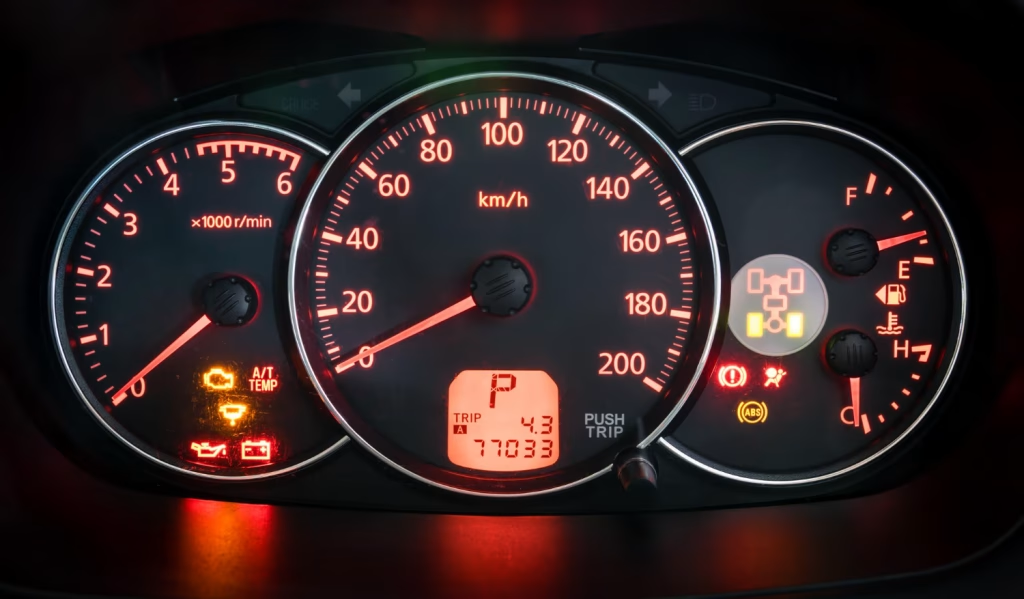
When a light shows up on your dashboard, it’s more than just an inconvenience. For many drivers, it sparks immediate questions: Is my car about to break down? Is it safe to keep driving? Will this repair be expensive?
To separate myths from facts, Jarred Mason, ASE-certified technician and owner/operator of Mason Automotive in Bloomington, IN explained important things to understand.
With over a decade of experience and factory training from General Motors, Jarred shares his expert perspective on what different warning lights mean, why professional diagnostics matter, and how you can avoid wasting money on unnecessary repairs.
When the check engine light comes on, many drivers’ first thought is: “I’ll swing by AutoZone or Firestone and get a free scan.” It sounds like a smart move — quick, convenient, and best of all, free. But here’s the catch: those “free scans” are not diagnostics. They’re a sales tool.
A code reader simply plugs into your vehicle’s OBD-II port and retrieves stored diagnostic trouble codes (DTCs). The printout you get may list a code like P0133 – Oxygen Sensor Circuit Slow Response.
At first glance, that looks like a diagnosis. But it’s not. It’s a clue. The computer is telling you that something in the oxygen sensor circuit isn’t right. What’s causing it? That’s where things get complicated.
Jarred explains:
“The code doesn’t mean your oxygen sensor is bad. It just means the circuit isn’t reading properly. That could be a bad wire, an exhaust leak, or even a different sensor throwing things off. The free scan doesn’t tell you that.”
Most parts store employees aren’t mechanics. They’re trained to read the code, then suggest a handful of parts that commonly cause it. The problem is that this shotgun approach wastes money.
Jarred has seen it countless times:
“People walk in here after spending seven hundred bucks on parts that didn’t fix anything. Once those parts are on the car, they’re non-returnable. That ‘free scan’ just cost them a week’s paycheck.”
This is one of the biggest differences between a parts store and Mason Automotive. If the suggested parts don’t solve the issue, the store takes no responsibility. There’s no warranty on their guesswork, no guarantee that the problem will be resolved.
Contrast that with Mason Automotive’s promise:
These free diagnostics feels good, but when it comes to your car, “free” often has hidden costs:
In reality, those free scans can become the most expensive route — because they delay getting to the real fix.
One customer came to Mason Automotive after a local parts store scan showed an oxygen sensor fault. The store recommended replacing the sensor. The customer bought it, installed it, and the light came back on.
On the second visit, the store suggested a catalytic converter. Facing a $1,200 repair, the customer came to Jarred for a second opinion.
After proper testing, Jarred found the real issue: a small exhaust leak before the sensor. The total repair cost was a fraction of what the customer was about to spend.
“If he had gone with what the store told him, he’d be out over a thousand dollars and still have the same problem. One hour of diagnostics solved it.”
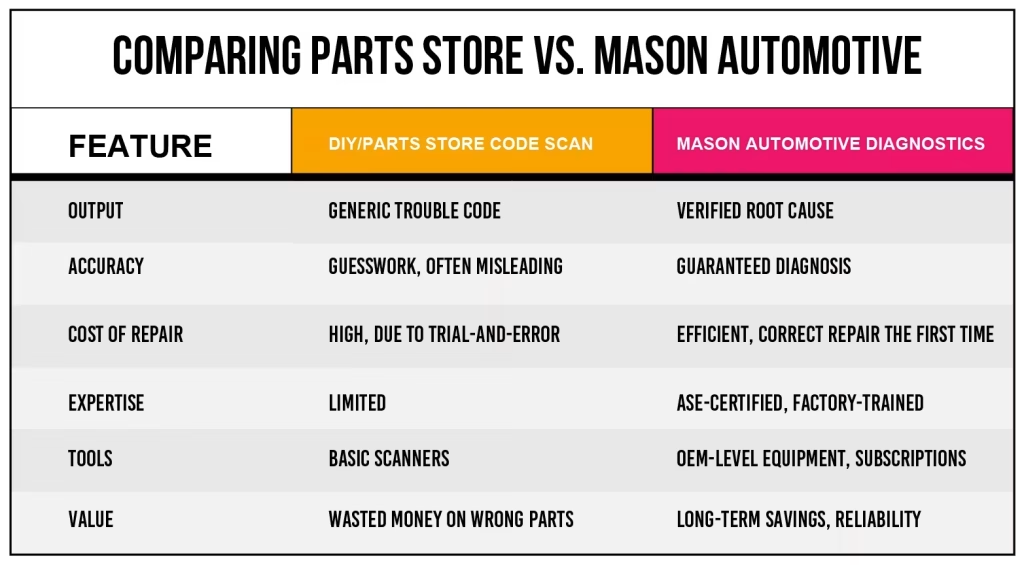
Free Scan: Prints out a generic code. Leaves you guessing.
Professional Diagnostic: Identifies the root cause with proof. Saves money by fixing the problem the first time.
Jarred sums it up best:
“It’s an 18-year-old kid plugging in a machine. That’s not diagnostics. Diagnostics is testing, verifying, and guaranteeing. That’s what we do.”
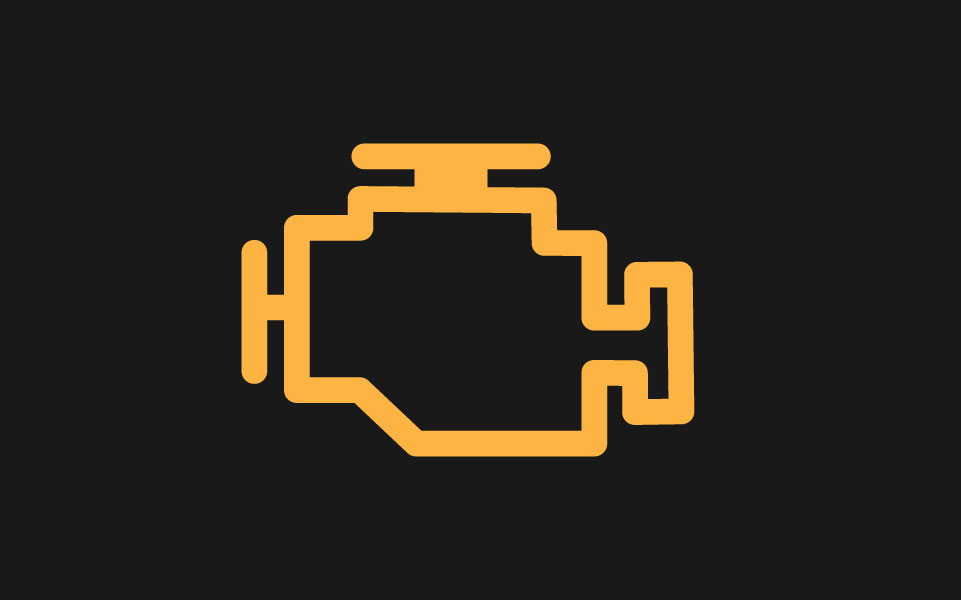
The check engine light is the most notorious warning symbol. Drivers often ask: What’s the difference between a check engine light blinking and a steady one?
Flashing or blinking check engine light
Steady check engine light
Jarred explains what you should do:
Another confusing dashboard symbol is the Service Engine Soon (SES light). Many assume it’s just a reminder for an oil change. But depending on the vehicle, it can indicate much more.
Routine maintenance alerts – Some manufacturers use the SES light as a service reminder.
Performance-related issues – In other models, the SES functions like a check engine light, flagging system faults.
Jarred clarifies:
“Drivers ignore the SES light because they think it’s minor. But it can be the same thing as a check engine light. Don’t gamble — get it checked to be sure.”
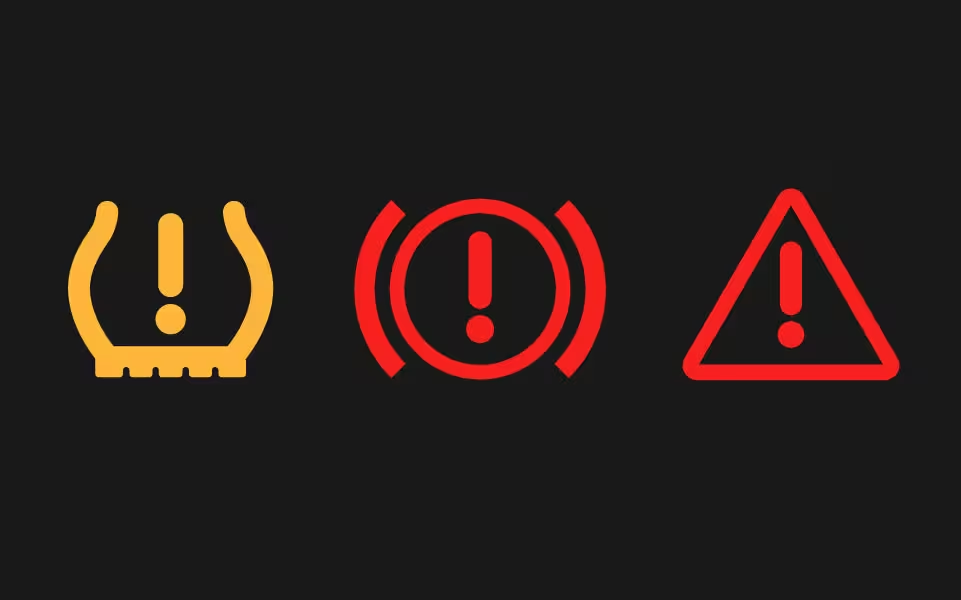
Few lights cause as much panic as the exclamation point in your car. The meaning depends on the icon style:
Jarred’s advice is simple: “Any exclamation point means stop and pay attention. It’s your car’s way of shouting for help.”
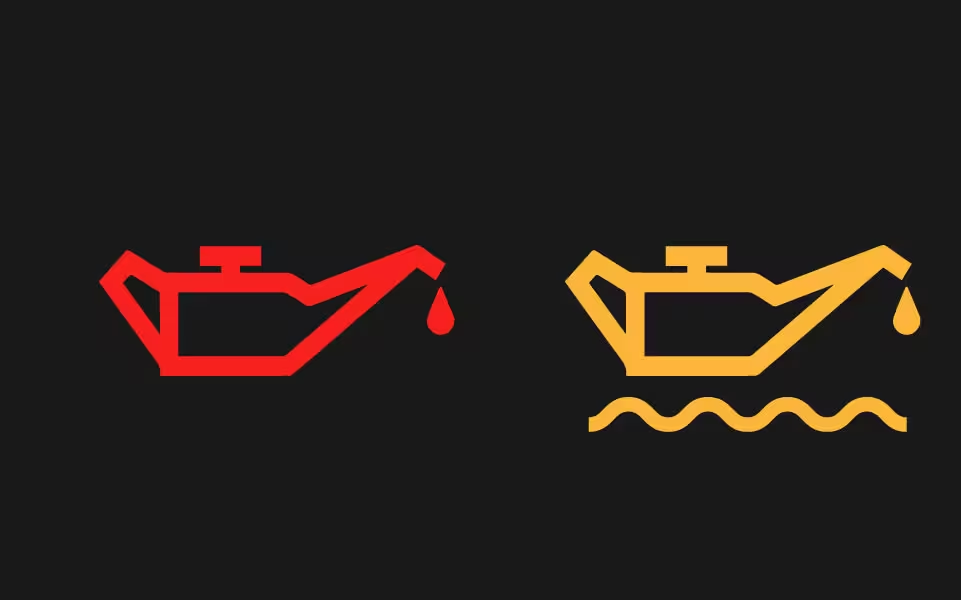
Meaning: The red symbol indicates low oil pressure. Unlike the yellow warning of low oil level, low oil pressure means the oil isn’t circulating properly through the engine. Causes may include critically low oil level, a failed oil pump, blocked passages, or even internal engine damage.
Action: Stop driving and shut off the engine immediately. Continuing to run the car with low oil pressure can cause catastrophic engine failure within minutes — bearings can seize, pistons can lock, and you may end up needing a full engine replacement. Take your car to a repair shop to fix the oil issue.
Expert Insight: Jarred emphasizes: “That oil light is one of the few you should never gamble with. If you keep driving, you’re rolling the dice with the life of your engine.”
Meaning: The thermometer symbol means the engine is overheating. Causes include low coolant, a broken water pump, a stuck thermostat, radiator blockage, or even a failed cooling fan.
Action: Safely pull over and shut the engine off. Never open the radiator cap while hot — escaping steam and boiling coolant can cause serious burns. Wait until the engine cools before checking fluid levels.
Consequences of Ignoring: Driving an overheated car can warp cylinder heads, blow head gaskets, or seize the engine. Repairs can climb into the thousands if this light is ignored.
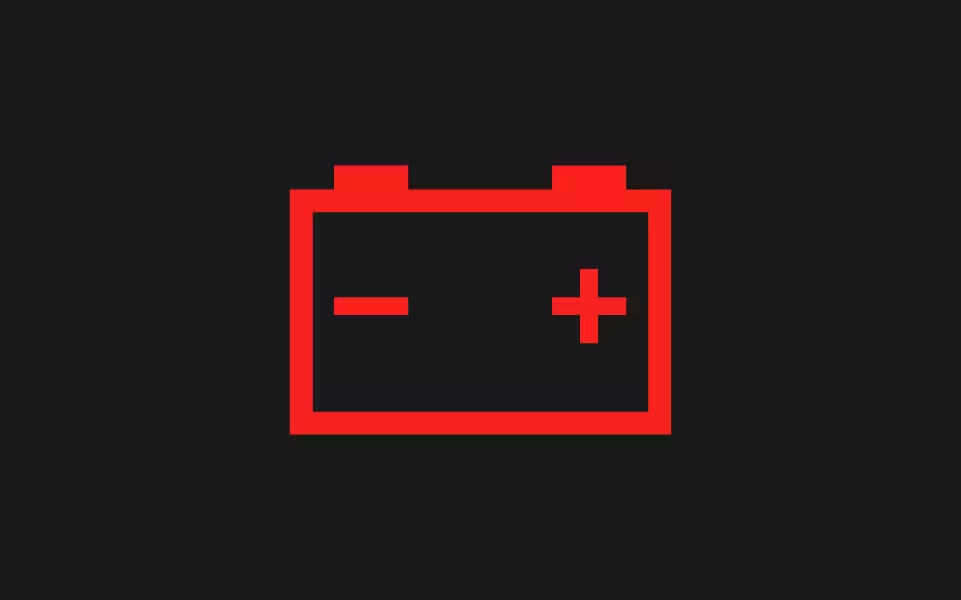
Meaning: This indicates a charging system failure — the alternator may not be charging the battery, or there could be a loose or damaged belt, corroded connections, or a failing battery itself.
Action: If this light comes on, your vehicle is running purely on battery power. You may have only minutes to an hour of drive time before the engine shuts off completely. Drive directly to a service shop if possible to test or replace your car battery.
Real-World Risk: Jarred warns: “People think they can keep driving with the battery light on. But once that battery drains, the car dies. It doesn’t care if you’re on the highway — it just shuts off.”
Meaning: This coil-shaped symbol is specific to diesel vehicles. Glow plugs heat the combustion chamber to aid cold starting. If the light stays on or flashes, it can signal glow plug failure, fuel injection problems, or emission control issues.
Action: Service soon to avoid performance loss, difficulty starting, or rough idling. Long-term neglect can damage diesel particulate filters (DPF) and increase emissions.
Diesel Driver Note: Cold-weather performance depends heavily on functioning glow plugs, making this warning especially important in winter.
Meaning: Usually displayed as a car with squiggly tire tracks underneath. This symbol appears when traction control activates to prevent wheel spin, especially in slippery conditions. If it stays on, there may be a fault in the traction control or stability control system.
Action: If the light flashes briefly, it’s normal — the system is doing its job. If it remains on, schedule service, since traction and stability may be compromised.
Why It Matters: Without traction control, your car is more likely to lose grip in wet, icy, or uneven road conditions.

Meaning: Indicated by two red triangles flashing on the dash and exterior turn signals. Unlike the others, this isn’t a system fault — it’s a driver-activated function to signal emergency stops or warn other motorists of danger.
Action: Use hazards when your vehicle is stopped due to breakdown, accident, or emergency. If hazards activate on their own, it may indicate an electrical fault or system error that needs checking.
Pro Tip: Some vehicles also flash hazards automatically under hard braking — this is a safety feature, not a malfunction.
Meaning: This warning light usually signals a power steering system fault. On vehicles with hydraulic power steering, it can mean low fluid or a pump failure. On vehicles with electric power steering (EPS), it indicates an electrical fault or system malfunction.
Causes: Low or leaking power steering fluid (in hydraulic systems). Faulty power steering pump or belt. Issues with the EPS control module, motor, or sensors. Electrical problems like blown fuses or weak battery voltage.
Action: If the steering feels heavy or difficult, stop driving — the car can become unsafe to control. For hydraulic systems, check the fluid level and top up if necessary. For EPS systems, a diagnostic scan is required to pinpoint the fault.
Jarred notes: “When that steering light comes on, don’t ignore it. If the system fails completely, you’ll feel like you’re wrestling a truck to turn the wheel. It’s a safety hazard.”
ABS (Anti-lock Braking System) Light
This light, often showing the letters “ABS,” means the anti-lock braking system is malfunctioning. While your car can still brake, the safety feature that prevents wheel lock during emergency stops may not work. Driving cautiously is advised until the system is checked.
ESP/BAS or Stability Control Light
Depending on the make, you may see “ESP,” “BAS,” or a symbol similar to traction control. This indicates an issue with your vehicle’s electronic stability program or brake assist system. It’s related to handling and emergency braking, so professional service is recommended if it stays on.
Seat Belt Reminder
A red icon showing a seated person with a belt across the chest, sometimes accompanied by a chime, indicates someone in the vehicle hasn’t fastened their seatbelt. Some systems even detect rear passengers and display separate icons.
Door Light
A simple but important warning, this icon looks like a car with one or more doors open. Driving with a door not fully shut is unsafe, and the light reminds you to double-check all doors before moving.
Low Fuel Indicator
Usually shaped like a gas pump, this warning appears when your fuel level is critically low. It’s not just about running out of fuel—frequent low-level driving can also draw sediment into the fuel system, potentially causing damage.
Washer Fluid Warning
This light, often resembling a windshield with water spray, tells you the windshield washer fluid is low. While not a safety-critical system, having washer fluid is vital for visibility, especially in dusty, snowy, or muddy conditions.
Adaptive Cruise Control or Lane Assist Warnings
Modern vehicles often include advanced driver assistance systems (ADAS). Indicators for adaptive cruise (a car with a speedometer or radar waves) or lane departure (a car between lines) mean these systems are active, malfunctioning, or unavailable due to conditions like heavy rain or dirty sensors.
The rule of thumb: red lights mean urgent issues, yellow or orange lights mean caution, and green/blue lights simply show a system is active (like headlights or cruise control). Understanding these other signs ensures you respond correctly, avoid panic, and keep your vehicle in good condition.
At Mason Automotive, every diagnosis is rooted in accuracy, expertise, and integrity. By combining advanced equipment with factory-level knowledge, they provide answers you can trust — and solutions that save you money long-term.
Whether you’re dealing with a check engine light flashing, an SES light, or an exclamation point on the dash, remember: your car is talking to you. Trust experts who know how to listen.
📍 Schedule your engine diagnostic with Mason Automotive in Bloomington, IN today — and get back on the road with confidence.